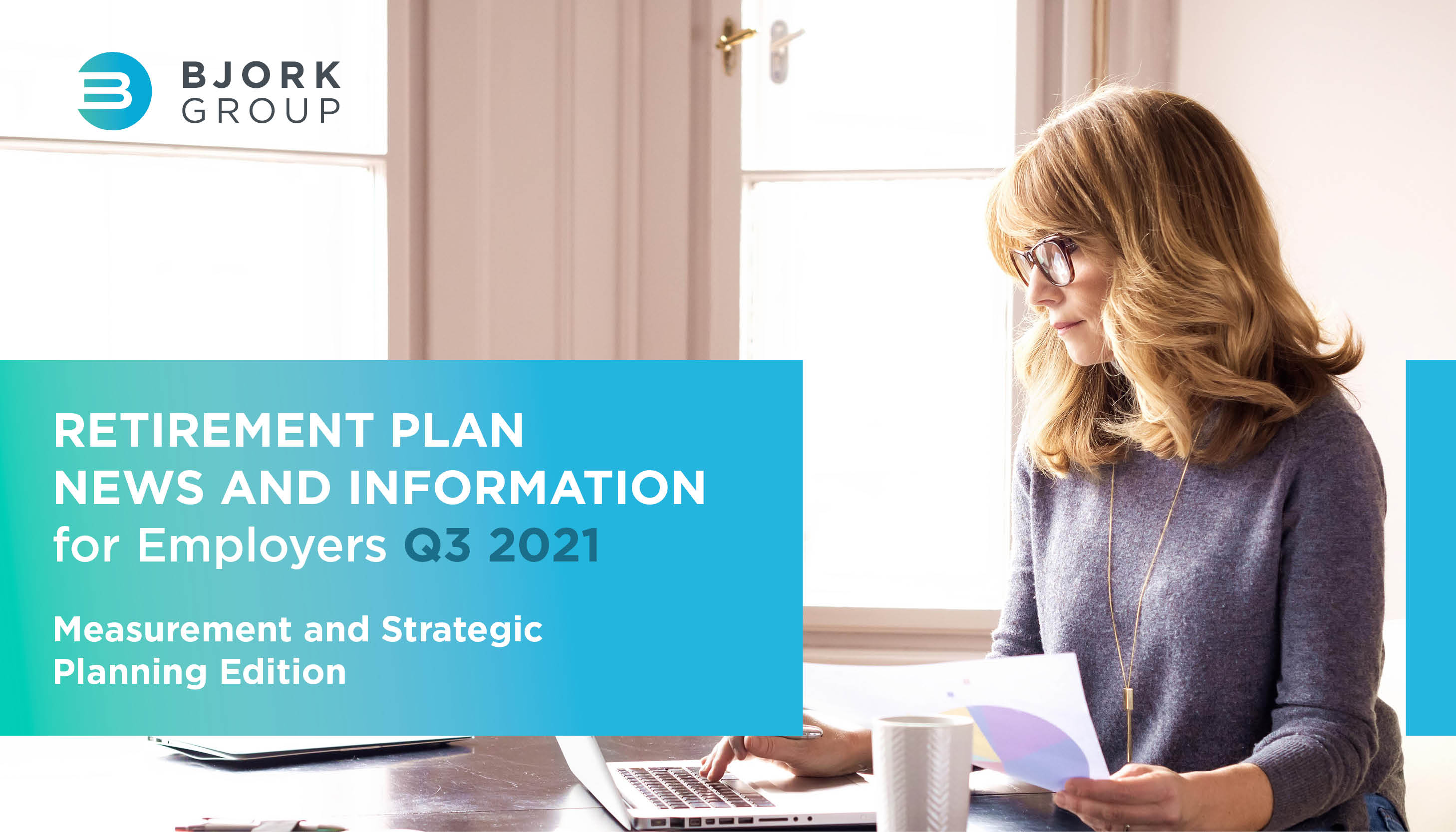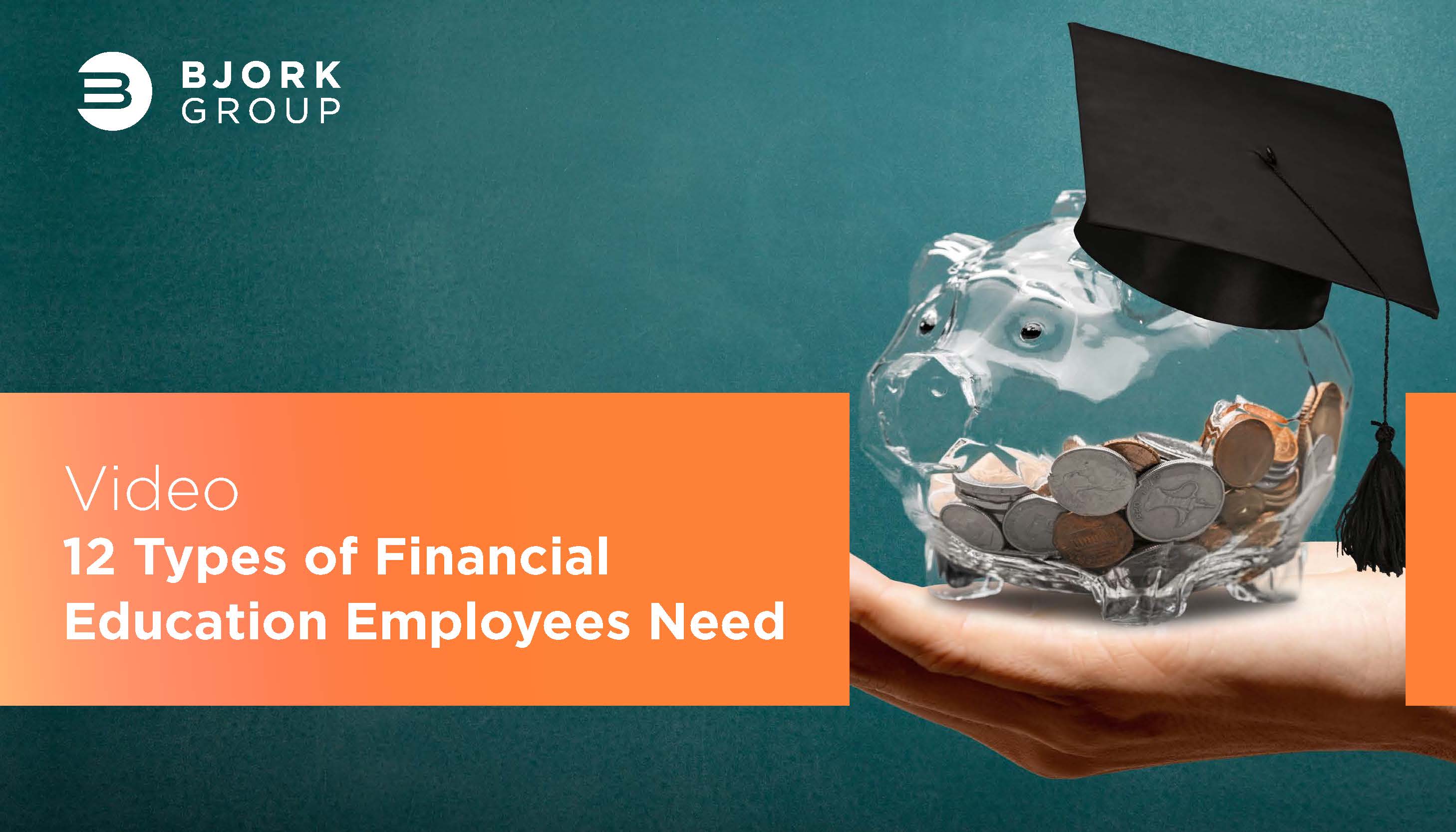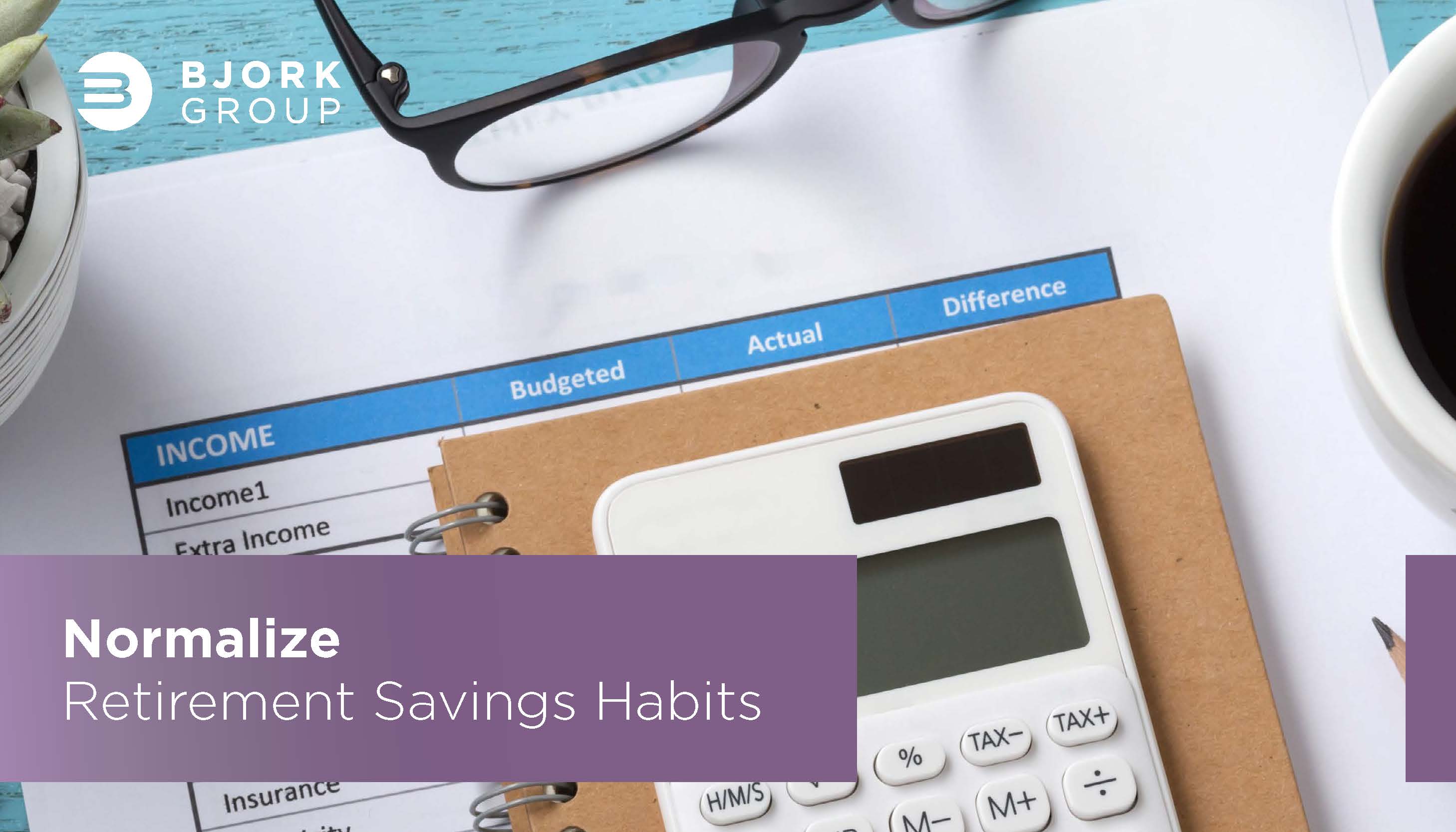2022 Deadline Nears: Now is the Perfect Time to Review Your Retirement Plan Design
- Bjork Group

For the millions of business owners that offer a workplace retirement plan, the COVID-19 pandemic created many financial difficulties.


For the millions of business owners that offer a workplace retirement plan, the COVID-19 pandemic created many financial difficulties.


Help your employees save with a plan that fits your unique organization! Each type of retirement plan comes with its own set of features and tax advantage strategies for employees and employers.


Just ask anyone: Uncle Sam and the retirement industry love acronyms. Another was added in December 2020—PEP—which conveniently rhymes with MEP and SEP. The three plan types are 401(k) cousins[1] meaning they share many fundamental similarities, and their main differences relate to the administrative models they use.


As the first half of the year phases out, it’s time to focus on measuring and begin strategic planning for your retirement plan. There’s a lot of new items on the agenda this year, from the CARES Act rules for repayment of loans to SEPs, MEPs and PEPs. Plan sponsors may have a lot of their plates.


Each of your employees is unique with their own individual lifestyle path. That said, your employees need guidance to make smarter decisions about their money so they can learn not only how to save today but how to build wealth for the future!


30% of Americans don’t have a budget. In fact, 3 in 5 don’t know how much they spend last month, and the median household retirement account balance in America is $50,000.


The global pandemic has had a staggering effect on the economic lives of millions, driving them to actions that could have long-lasting effects on their retirement savings.
Facing unprecedented strain caused by the COVID-19 crisis, individuals who lack adequate emergency savings are turning to retirement plans to address their financial shortfalls.
Additionally, hardship withdrawals have been made easier by the passage of the 2020 Coronavirus Aid, Relief, and Economic Security (CARES) Act. The Act expanded distribution options, offered favorable tax treatment for coronavirus-related distributions from eligible retirement plans and relaxed payback options for those who met specific criteria.
A reported six percent of retirement plan holders took advantage of at least one CARES Act provision offered by the plan. Of these withdrawals, 21% took the maximum amount allowed under the Act ($100,000 or 100% of the vested balance).


When employees are financially stressed, they spend three or more hours a week – approximately 150 hours per year – worrying about personal finances or dealing with them at work.


Many American workers struggled financially before the COVID-19 pandemic. Therefore, it isn’t surprising that this crisis could greatly hinder their ability to reach their retirement income goals.
Indeed, more than three-quarters of employees (77%) say they have been concerned about their financial well-being since the COVID-19 outbreak and 82% will rely on their workplace retirement plan as a primary income source in their post-working years. That is, if they can get there — four in five employees expect to continue working for pay after “retiring.”
In addition, many simply can’t afford to retire; the median household retirement savings is just $50,000. That’s nowhere near the 60-80% replacement income financial experts say most people need to maintain their pre-retirement standard of living.
What does all this say about retirement readiness in America? More importantly, what does it indicate about the effectiveness of workplace retirement plans?
The data above clearly demonstrates that for far too long and far too many Americans, reaching a successful replacement retirement income has been the exception, not the norm. So, it stands to reason that employers must reimagine the function of their company’s retirement plan to help “normalize” saving for the future.
Employers should evaluate their plan’s value through the lens of helping more employees retire on time and with dignity. That means getting employees to recognize that saving for retirement isn't “optional” if they want to stop working someday. It also means providing them with the right tools toward helping them save enough to replace their income for 10, 20, 30 or more years.
